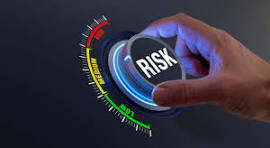The Role of Technology in Risk Management
Technology is pivotal in modernizing and enhancing risk management practices across businesses. By leveraging advanced technological solutions, organizations can automate processes, streamline operations, and derive valuable insights from data to make informed decisions.
1. Risk Assessment and Modeling: Advanced analytics and modelling tools are pivotal in modern risk management. These technologies enable businesses to assess risks more accurately by analyzing historical data, identifying trends, and simulating various scenarios. Through quantitative analysis, organizations can better understand potential impacts, prioritize risks, and allocate resources effectively. This data-driven approach enhances decision-making and enables proactive risk management strategies.
2. Data Management and Reporting: Technology facilitates efficient data management, enabling businesses to collect, store, and analyze vast amounts of information related to risks. This data can include financial data, operational metrics, market trends, and more. By leveraging powerful analytics tools, organizations can generate real-time reports, dashboards, and visualizations that provide actionable insights into current risk exposures and trends. This capability not only improves transparency but also supports regulatory compliance and strategic planning.
3. Automated Controls and Monitoring: In today’s interconnected digital landscape, automated controls and monitoring systems are critical in mitigating risks promptly. Technology enables the implementation of automated alerts, anomaly detection, and continuous monitoring across various domains such as financial transactions, cybersecurity threats, and operational processes. These systems can detect potential risks in real time, allowing organizations to respond swiftly and mitigate impacts before they escalate.
4. Collaboration and Communication: Effective risk management requires seamless collaboration and communication among stakeholders, including executives, department heads, risk managers, and compliance officers. Technology facilitates this collaboration through integrated platforms for sharing information, documenting risk assessments, and communicating mitigation strategies. Cloud-based solutions, collaborative tools, and secure communication channels enable stakeholders to stay informed, coordinate responses, and align risk management efforts across the organization.
5. Strategic Integration and Decision-Making: By integrating technology into risk management practices, organizations can achieve strategic alignment between risk management objectives and overall business goals. Technology enables a holistic view of risks across the enterprise, facilitating strategic planning, resource allocation, and risk appetite determination. With enhanced visibility and predictive capabilities, decision-makers can make informed choices that mitigate risks effectively while seizing opportunities for growth and innovation.
In conclusion, technology plays a transformative role in enhancing risk management capabilities within businesses. By leveraging advanced analytics, automated systems, and collaborative platforms, organizations can navigate complexities, mitigate risks proactively, and drive sustainable growth. Embracing technological advancements not only improves operational efficiency but also strengthens resilience in an increasingly dynamic and interconnected business environment.


